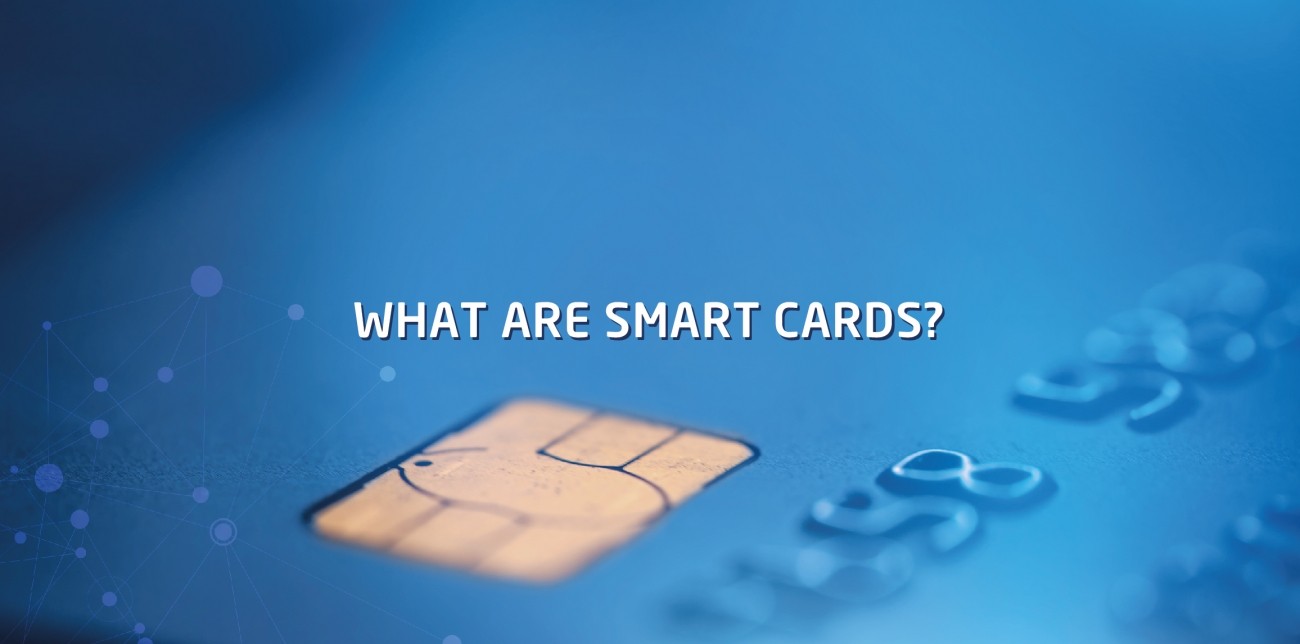
The power of the computer is encapsulated in a plastic card. This is how some technology experts will sum up the concept of smart cards. So, what are smart cards, what are their types, and how do they work?
What Are Smart Cards?
Smart cards are cards made from metal or plastic, usually polyvinyl chloride (PVC), with an integrated microprocessor and memory chip that acts as a security token that uses encryption technology.
Smart cards are meant to store and process data as they have their own operating system. Many of us are familiar with smart cards; payment cards, smart IDs, and smart health cards are all types of smart cards used in everyday life.
Smart card technology has many benefits. They provide higher security than magnetic strip cards because with the microprocessor there is no need to connect to a separate data processing centre. They also provide more space to store valuable data with the guarantee the data is protected against tampering and unauthorised alterations.
The Evolution of Smart Cards
Smart cards are not a recent invention. The first smart card, or let’s say the smart ring was introduced in the 1970s.
Yes! You read that right, a ring. French inventor, Roland Moreno, presented the concept of smart cards as a chip fixed on a ring that can read them. The chip was later integrated into a plastic card to be called “la carte à puce” which translates to “the chip card”.
The smart card was patented but remained theoretical, until 1977, when three commercial companies; Bull CP8, SGS Thomson, and Schlumberger, developed the concept into an actual product.
Doubted by many at first, smart cards managed to prove their effectiveness and were acknowledged by many European countries. They were used in railways, parking metres, parking lots, and toll booths.
The United States was late to show interest in smart card technology; the first initiative was made by MasterCard International in 1985 when they agreed to study the integration of smart cards in payments.
Today, smart cards can be found in every wallet and smart card applications play a major role in several industries, including banking, insurance, telecommunications and transportation.
How Do Smart Cards Work?
Smart cards need a card reader device to operate. The device enables data exchange through a serial interface. The chip within the card is equipped with a contact pad that makes the data exchange possible.
The contact between the smart card and card reader can either be direct (physical) or indirectly through a wireless system, e.g., Radio Frequency Identification (RFID), or Near-Field Communication (NFC).
Once the contact is made, the reader transmits the data stored within the smart card’s chip to its destination, a payment terminal or authentication system, to be processed to carry out the desired action.
Types of Smart Cards
The three common types of smart cards are:
Contact Smart Cards
Contact smart cards are inserted into the card reader where the conductive contact plate on the card comes into direct contact with the device's touch point to send and receive data.
Contactless Smart Cards
As the name suggests, direct contact is not required with these types of smart cards. The contactless card needs to be in proximity to the reading device and the connection will be made with the help of antennae within the card and reader, and wireless radio frequencies.
Dual-Interface Smart Cards
Dual-interface smart cards employ both contact and contactless card reading technologies. Some may confuse them with hybrid smart cards since they also provide both contact and contactless options.
The main difference is that hybrid cards incorporate two separate chips, one for the direct contact function and one for the contactless function. Dual-interface smart cards have one embedded chip.
EDC Card Services
We provide a range of smart card personalisation services to banks and financial institutions. With the instant issuance service, we enable banks to convert a pre-printed card instantly to a ready-to-use credit/debit card, helping them to offer an elevated customer experience and increase their revenue.
EDC also offers EMV data management solutions and all the card fulfilment and packaging services organisations need under one roof.



